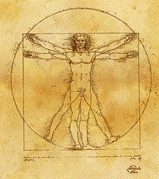Instructional Materials in Physics and Astronomy

Physical Science Modules for Bioscience Students
Document Type
Article
Date of this Version
1975
Abstract
What happens in the lung is that air meets blood. Figure 1 shows the lung's architecture. Focus your attention upon the smallest scale structures which are the termini of the air passages. These are the alveolar air sacs or, simply, alveoli. The inhalation/exhalation actions of the lung, alternately, flood these alveoli with atmospheric air and expel its oxygen-poor/carbon dioxide-rich replacement. Figure (2a) depicts, in a somewhat simplified manner, these alveoli with their appended venous blood suppliers, the pulmonary arteries. Figure {2b} shows the structure of the blood distribution system over a small, typical portion of the alveolar surface in much more detail. Here lies an extensive system of capillaries. The blood comes in from above and left, then flows through the expansive capillary bed, toward the right and out. What happens at these alveolar surfaces is that the venous blood and the alveolar air meet at the capillary bed surfaces, separated there by only one or two microns of membrane. It is through this thin membrane, which maintains both the integrity of the air passages on one side and the integrity of the blood system on the other, that oxygen and carbon dioxide gases move in opposite directions. The process of this movement of matter is called diffusion, and is the subject of this module.


Comments
Project address: PSMBS, 213 Ferguson Hall, University of Nebraska, Lincoln, Nebraska 68588 United States